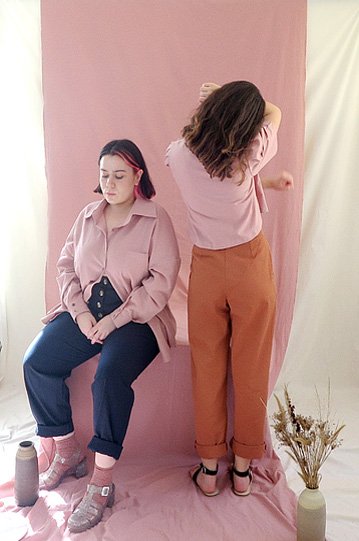The environmental impacts of the fashion industry and the dimensions of labour rights are among the issues that have been discussed for many years and tried to be improved with various technological and social innovations, especially in recent years. Sustainable materials and production methods, fair working conditions and the conscious consumer… Despite all these promising developments, there is another dark side of the fashion industry that has not yet been adequately illuminated: the stigmatizing and dominating design approach. Clothes designed to be used only in an imaginary world, for an illusory ideal body and wearer. Now, we should talk about inclusive fashion more.
 The dominant paradigm that manages and reproduces the values and living systems of society has a western and masculine perspective. This paradigm is driven by a reductionist approach that argues that there is only one truth and reality, and that strongly rejects the different ways of being and knowing. According to this paradigm, the body and mind are sharply separated from each other and is considered a rational being that can acquire all kinds of information with the human mind. This rational thinking ability of human beings makes them superior to nature. The dominant, Cartesian paradigm argues this. Such a view creates a sharp dualism, of course. Thus, dualism sharply separates culture from nature, the mind from nature, the man from the woman, the mind from the body, the master from the slave, the production from the reproduction, the subject from the object. Consequently, it puts “other’’ in an enemy place. This is exactly why racism, hunting, destructive industrialism, misogyny is all one problem. These are different symptoms of a single disease…
The dominant paradigm that manages and reproduces the values and living systems of society has a western and masculine perspective. This paradigm is driven by a reductionist approach that argues that there is only one truth and reality, and that strongly rejects the different ways of being and knowing. According to this paradigm, the body and mind are sharply separated from each other and is considered a rational being that can acquire all kinds of information with the human mind. This rational thinking ability of human beings makes them superior to nature. The dominant, Cartesian paradigm argues this. Such a view creates a sharp dualism, of course. Thus, dualism sharply separates culture from nature, the mind from nature, the man from the woman, the mind from the body, the master from the slave, the production from the reproduction, the subject from the object. Consequently, it puts “other’’ in an enemy place. This is exactly why racism, hunting, destructive industrialism, misogyny is all one problem. These are different symptoms of a single disease…
"We believe everybody has the right to enjoy the healing and facilitating power of design."
This kind of worldview, therefore, regards the body as inferior, an object to be managed, controlled, tamed, and dominated. It sets an arbitrary norm and ignores all bodies outside of this normative reality, which convinces everybody that it is natural. In such an approach, the target audience of the act of “design”, which aims to make life easier and enjoyable, is of course only “deserving” normal individuals.
 In my humble opinion, the most problematic part of this approach is that it persuades that a respectable and enjoyable life is not a right for those who fall outside the norm. I deny this by arguing that design should make everyone’s life easier and delightful. Moreover, I believe that through design we can build diversity, social inclusion, and equal and fairer life. For this reason, Atölye Ren integrates inclusive design principles into all its processes, contributing to transforming dressing practices and forming an inclusive society. However, Atölye Ren is not only a brand that produces a wide range of clothes and does this production with slow and sustainable methods; it is an idea and an action devoted to creating a dressing practice that lacks patterns and rules but has values and principles.
In my humble opinion, the most problematic part of this approach is that it persuades that a respectable and enjoyable life is not a right for those who fall outside the norm. I deny this by arguing that design should make everyone’s life easier and delightful. Moreover, I believe that through design we can build diversity, social inclusion, and equal and fairer life. For this reason, Atölye Ren integrates inclusive design principles into all its processes, contributing to transforming dressing practices and forming an inclusive society. However, Atölye Ren is not only a brand that produces a wide range of clothes and does this production with slow and sustainable methods; it is an idea and an action devoted to creating a dressing practice that lacks patterns and rules but has values and principles.
So, what is this inclusive design? How does inclusive design correspond in fashion? How changing the design paradigm can transform our lives? In the 11th episode of Notion Talks, a podcast of Notion Kolektif’s, you can find the answers to all these questions in our pleasant conversation about the body, social norms, and inclusive design in fashion, and even better, you can leave the broadcast with many more questions. Enjoy it…

1 reply on “Inclusive Fashion”